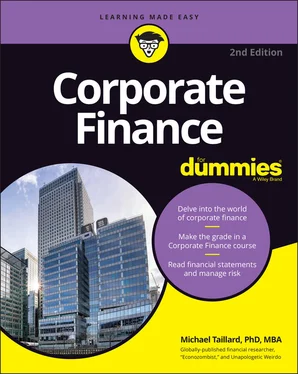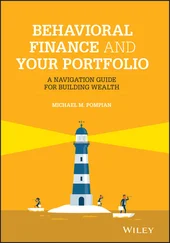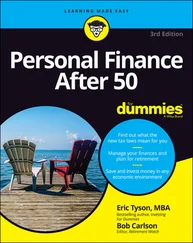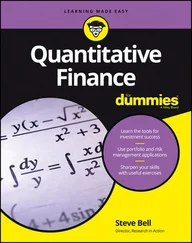Michael Taillard - Corporate Finance For Dummies
Здесь есть возможность читать онлайн «Michael Taillard - Corporate Finance For Dummies» — ознакомительный отрывок электронной книги совершенно бесплатно, а после прочтения отрывка купить полную версию. В некоторых случаях можно слушать аудио, скачать через торрент в формате fb2 и присутствует краткое содержание. Жанр: unrecognised, на английском языке. Описание произведения, (предисловие) а так же отзывы посетителей доступны на портале библиотеки ЛибКат.
- Название:Corporate Finance For Dummies
- Автор:
- Жанр:
- Год:неизвестен
- ISBN:нет данных
- Рейтинг книги:4.5 / 5. Голосов: 2
-
Избранное:Добавить в избранное
- Отзывы:
-
Ваша оценка:
- 100
- 1
- 2
- 3
- 4
- 5
Corporate Finance For Dummies: краткое содержание, описание и аннотация
Предлагаем к чтению аннотацию, описание, краткое содержание или предисловие (зависит от того, что написал сам автор книги «Corporate Finance For Dummies»). Если вы не нашли необходимую информацию о книге — напишите в комментариях, мы постараемся отыскать её.
Corporate Finance For Dummies,
Corporate Finance For Dummies,
Corporate Finance For Dummies — читать онлайн ознакомительный отрывок
Ниже представлен текст книги, разбитый по страницам. Система сохранения места последней прочитанной страницы, позволяет с удобством читать онлайн бесплатно книгу «Corporate Finance For Dummies», без необходимости каждый раз заново искать на чём Вы остановились. Поставьте закладку, и сможете в любой момент перейти на страницу, на которой закончили чтение.
Интервал:
Закладка:
 Another form of high-interest loan is called the payday loan. The payday loan basically makes loan sharks legal (organizations that offer loans at rates above the legal level and who often have heavy-handed tactics). The payday loan gives you money for a short period, usually only one to two weeks, and charges several hundred percent in annual percentage rate, in addition to fees and penalties. Rather than breaking your knees, as the stereotype suggests, these lenders simply annihilate your credit score and financial well-being. As a result, many states have outlawed these lenders.
Another form of high-interest loan is called the payday loan. The payday loan basically makes loan sharks legal (organizations that offer loans at rates above the legal level and who often have heavy-handed tactics). The payday loan gives you money for a short period, usually only one to two weeks, and charges several hundred percent in annual percentage rate, in addition to fees and penalties. Rather than breaking your knees, as the stereotype suggests, these lenders simply annihilate your credit score and financial well-being. As a result, many states have outlawed these lenders.
For a period between the 1980s and 1990s, subprime mortgage lenders were also very common. In fact, they contributed to the 2007 financial collapse, when many commercial banks were venturing into the subprime market with little or inappropriate risk management. Bottom line: Avoid loan sharks and subprime lenders at all costs, or they’ll ruin your finances and the greater economy at large.
Exchanges
Exchanges such as the NASDAQ, NYSE, Nikkei, and others are globally renowned for being open forums for ferocious trading. In both stock and commodities exchanges, the most recognized space is called the pit, or trading floor, and it’s where large numbers of brokers and dealers shout and scream at each other, buying, selling, and trading shares of this or that. Of course, computers are now replacing much of this in-your-face activity. Even on the trading floor itself, computers are becoming ever present, while the number of people who vigorously declare their intentions to anyone within a two-mile radius is quickly shrinking. The function of the exchanges themselves is more about providing a place for these trading activities to occur than anything, making them increasingly irrelevant with modern technological advances in investing transactions.
Regulatory bodies
Numerous regulatory bodies oversee corporate finances and financial institutions, and each one warrants its own book (in fact, the role and regulations encompassing each regulatory body span volumes of books of information). I obviously can’t fit all that information in this book, so I just cover the basics of the main regulatory bodies here. Armed with their names and main purposes, you can do a quick online search to find out more about the ones that interest you most.
Securities and Exchange Commission (SEC): Sets the standards for corporate public financial reporting, the rules for investment, and the regulations for securities exchanges
Internal Revenue Service (IRS): Handles all tax reporting, tax accounting, tax collection, and pretty much all taxation issues other than determining the tax rates
Financial Industry Regulatory Authority (FINRA): A nongovernmental organization that’s in charge of setting and enforcing regulations among its member groups, which include brokerage firms and exchange markets
Commodity Futures Trading Commission (CFTC): The government body that regulates derivatives trading
Federal Deposit Insurance Corporation (FDIC): One of the few private corporations owned by the United States; sells insurance to depository institutions, ensuring that the deposits of each person be insured up to $250,000 in the event that something happened to the institution
Office of the Comptroller of Currency (OCC): Part of the U.S. Treasury; regulates all national commercial banks
National Credit Union Administration (NCUA): A government-backed organization that regulates credit unions
American Institute of Certified Public Accountants (AICPA): The professional organization that regulates all certified public accountants
Chartered Financial Analyst Institute (CFAI): The professional organization that regulates all chartered financial analysts
Financial Accounting Standards Board (FASB): A nonprofit organization that creates the generally accepted accounting principles (GAAP) that are used for all public accounting in the United States.
Government Accounting Standards Board (GASB): The non-profit organization that regulates the accounting of state and local governments
Federal Accounting Standards Advisory Board (FASAB): An advisory committee that regulates accounting standards for the U.S. federal government
Financial Accounting Foundation (FAF): The organization that provides oversight and regulation for other regulatory and professional bodies such as the AICPA, CFAI, and GASB
These are just U.S. regulatory bodies. Many more bodies provide oversight and regulation around the world. Plus, many nations are beginning to adopt international accounting standards (IAS), which may limit the need for individual national accounting standards; however, the standards boards will likely remain in most nations even after they adapt IAS. Looking at all the regulatory bodies that regulate other regulatory bodies, I believe that the industry as a whole may welcome some streamlining — not less regulation, necessarily (that’s a far more complicated debate), but less bureaucracy.
Federal Reserve and U.S. Treasury
I’ve heard a lot of conspiracy theories about the Federal Reserve in my days in corporate finance. Even among a small minority of fringe economists (namely, the Austrian school of macroeconomics), a lot of people misconceive the actual role of the Federal Reserve. These misconceptions and conspiracy theories are a little odd, considering the actions of the Federal Reserve are all quite transparent. Its reports are all available for public view, its actions are all over the news each day, and the public can even see its hearings on TV sometimes. The Fed, as it’s often called, actually has very limited power, so some of the conspiracies that exist tend to be nothing more than fantasy.
In contrast, the U.S. Treasury is practically immune to conspiracy because it’s just an arm of the bigger federal government. The corruption usually exists among those with higher authority (the Treasury isn’t really a decision-making body). The following sections take a brief look at each of these government entities.
Federal Reserve
The Federal Reserve isn’t a part of the federal government at all. It’s quasi-governmental, which means it performs functions related to managing the U.S. economy in cooperation with the government but isn’t actually under the direct control of any government body. Think of the Federal Reserve as the bank that other banks go to when they need banking services.
The Fed accepts deposits, makes loans to member banks, and facilitates loans between banks using the deposits. It also determines interest rates for certain key loans and the bank reserve requirement, which is the proportion of total deposits that commercial banks must keep available as liquid cash. Bank reserve requirements are used to manage bank liquidity for customer withdrawals and to manage the supply of money in the nation as a whole. The Fed generates funds by charging interest and by charging member banks a membership fee.
The controversy and confusion comes into play as the Federal Reserve receives money from the U.S. Treasury and then lends it out to member banks. The setting of interest rates is also one of the responsibilities of the Federal Reserve.
The reality is that the Federal Reserve is simply acting as a middleman for the distribution of funds, although the government can distribute funds without help from the Federal Reserve by way of spending more money through hiring contractors or distributing stimulus spending (like the new homebuyer’s tax credit). Banks tend to only purchase money from the Federal Reserve when they need to increase the total amount of money available, because interbank loans are a cheap, fast, and easy way to handle short-term shortages of money in reserve.
Читать дальшеИнтервал:
Закладка:
Похожие книги на «Corporate Finance For Dummies»
Представляем Вашему вниманию похожие книги на «Corporate Finance For Dummies» списком для выбора. Мы отобрали схожую по названию и смыслу литературу в надежде предоставить читателям больше вариантов отыскать новые, интересные, ещё непрочитанные произведения.
Обсуждение, отзывы о книге «Corporate Finance For Dummies» и просто собственные мнения читателей. Оставьте ваши комментарии, напишите, что Вы думаете о произведении, его смысле или главных героях. Укажите что конкретно понравилось, а что нет, и почему Вы так считаете.












